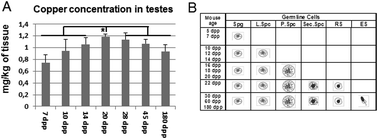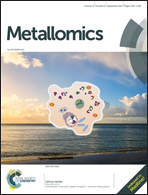Atp7a and Atp7b regulate copper homeostasis in developing male germ cells in mice
Abstract
The maintenance of copper homeostasis is critical for all cells. As learned from mice with disturbed copper metabolism, this trace element is also important for spermatogenesis. The experiments conducted in yeasts have demonstrated that appropriate copper level must be preserved to enable meiosis progression; however, increased copper level is toxic for cells. This study aims to analyze the expression profile of Atp7a and Atp7b and other genes encoding copper-related proteins during spermatogenesis in mice. Using the transcripts and protein detection techniques, we demonstrate that within seminiferous tubuli, ATP7A is mainly present in early meiotic germ cells (leptotene to pachytene spermatocytes) and in Sertoli cells (SCs). During spermatogenesis, the progression Atp7a expression profile corresponds to Slc31a1 (encoding copper importer CTR1) and Atox1 (encoding chaperon protein, which delivers copper from CTR1 to ATP7A and ATP7B) expression, suggesting that male germ cells retrieve copper and ATP7A protects them from copper overdose. In contrast, ATP7B protein is observed in SCs and near elongated spermatids; thus, its function seems to be related to copper extraction during spermiogenesis. This is the first study to give a comprehensive view on the activity of copper-related genes during spermatogenesis in mice.



 Please wait while we load your content...
Please wait while we load your content...